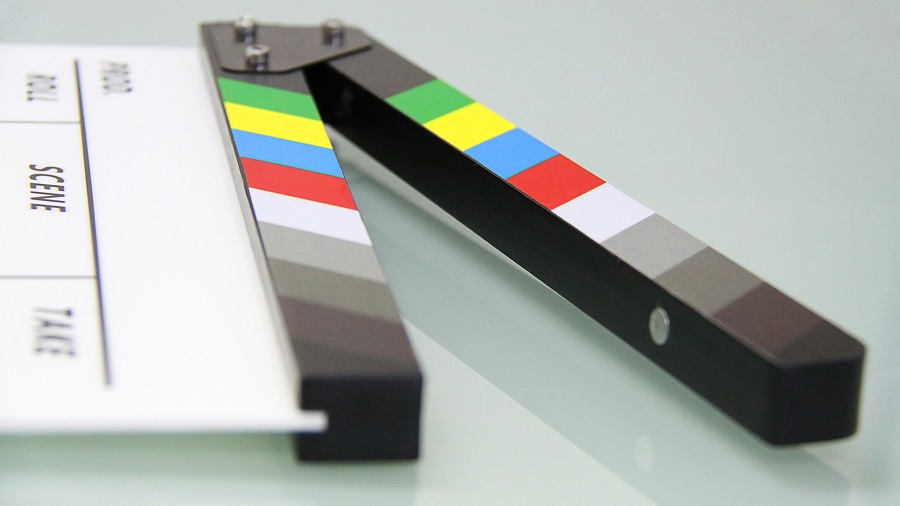5 Film Flaws Independent Filmmakers Make

Yes, that title has a lot of alliteration going on there, huh? Well, the truth is that there are usually many many more flaws in the average indie film, but what we are talking about in this post are the really big issues which is usually the difference from getting a film sold and having a film collect dust in your attic for years to come. Fix these five flaws and you’ll be on your way to selling your film!
1. Front-Loading the Budget
When you front-load the budget, you may not have enough money on the back end for a long editing process, re-shoots, ADR, or marketing/selling the film effectively afterwards for distribution.
When you start a production, make sure you provide amble room in the budget for overages in all phases of the film, not just during the shooting schedule. Keep in mind that this great vision of yours which was based off the amazing script you all love is really only about half-way there after shooting wraps.
Post-Production and the marketing/selling phases of filmmaking are just as important as the casting and shooting phases. Many films fail when the filmmakers only focus on the glamor aspects of the filmmaking process. Don’t be that filmmaker! Make sure you have a Producer on your team who’s frugal with the budget, and can reign everyone in when things start appearing like they’re going to go off the tracks even a little.
2. Poor Sound and Lighting
This is very common with the lowest end films which were shot on digital video, but newer HD film productions and even 35mm indies can be spotted with these flaws which effect the viewers’ connections with the story and the storytelling.
When you don’t take the time to mic a scene properly, you’ll be doing more ADR (Additional Dialogue Recording) later in post-production. Also related, hire an editor with a library of royalty-free music (or at least not expensive), and understands how important additional sound and music is to any professional picture.
Same goes for the lighting. Amongst the worst things you can do is have a dramatic scene at night where we can only make out a streetlight in the far distance of the background and the lead actress’ shirt because it’s white.
Hire a cinematographer and crew which have successfully performed in the shoot environments you’re going to be using. If you’re shooting a horror movie, this is of the utmost importance, because there will (more often than not) be some very dark and spooky scenes. Proper lighting will also help convey the right tension and mood of the film, as well.
You want your audience tuned in to the story, and not asking, “What did she say? I couldn’t hear her” or “What’s going on? I can’t see a thing.”
3. Not Respecting The Importance of the Editing Process
The editing process is where it all comes together. The script turned into a bunch of raw footage and multiple takes. Now it’s the editor’s turn to work their magic. This is arguably the most important part of the process, because the editing process controls the storytelling, the timing and pacing of the film, sweetening the sound and picture, and many other things.
What was once a great script, cast with a talented bunch of actors, and shot beautifully…could be destroyed by not hiring the right editor, or not having enough money saved for the editing process in case it goes long.
Filmmakers, here is where you have final cut, and say over the picture. The old saying, “Be prepared to cut your favorite scene” is very accurate and great advice. When you’re in the editing room, what’s important is the story, the pacing, and the audience you have in mind.
You’re most likely not Quentin Tarrantino or Christopher Nolan, though you very well could be, so just err on the side of caution and make sure you’re doing the story the biggest justice and not your ego.
4. Not Shooting Unit Photography or Having a Videographer On Set
These days, you can get professional quality services for cheaper than ever. What helps make modern film marketing strategies and techniques more effective is having more (and better) material to use during the last and very important sales and marketing phase. You do want to sell the film and have as many people see this as possible, right?
Start by hiring an on-set photographer to click away during the scenes (called “Unit Photography), and also do what’s called a “Special Shoot” where the actors dress up in character and they’re photographed against a white background, or on set, or interacting with each other, or posing solo.
Also, have a videographer on set, or someone with an HD point-and-shoot video camera who can capture interviews of the cast on-set, show a “Behind the Scenes” action scene, or anything else you can think of to shoot.
Having unit photography, special shoot photography, and on-set and behind the scenes video really puts you in a position of being able to effectively market your independent film and get is sold and distributed a lot easier.
5. Not Understanding How to Do Effective Marketing on Your Film
We saved the best for last! Marketing your film. Now that you saw our previous four flaws and fixed them, this process will be much easier and cheaper for you. Many filmmakers have the false impression that all they have to do is get their film seen and there will be bidding wars and an Oscar in their future. This is rarely the case, obviously.
With having a quality script, actors, sound, lighting, pacing, editing, and additional assets like outtakes, set photography, and behind the scenes video, you’re ready to sell it! How do you best do this? Know your role. Your role is not a marketer. You’re too close to the picture. Hire an expert marketer or marketing company who knows what they’re doing when it comes to Key Art and marketing your film.
Make sure you save about $5,000 to $10,000 to $20,000, depending on your overall scale and budget, for marketing and selling the film. You’re going to need to create Key Art (the poster art), Sell Sheets, a Website, a Trailer, and set up a Facebook fan page. All these services could add up when sourced separately. Look for a company with a package which specializes in independent film marketing.
Your Key Art should be professional. Your job here is to sell the film, not tell the whole story in one picture. Work with a talented and experience marketing staff and you’ll be treated to some great artwork. Negotiate up-front, though, to make sure the Key Art designers are going to create Key Art which will work for a poster (hi-res and “finishing” applied), a sell sheet (which has very different proportions to a standard one sheet/poster), and your social media needs.
Your Website admittedly isn’t as important for the success of your film as other businesses rely on the success of their companies. The business owner who’s not utilizing the Web in an effective manner could very well not be a business owner much longer these days. The film website should have the trailer, a blog/news section, Social Media tie-ins, and some other basic information like cast, crew, sales contacts, etc. You can get a specialized template made specifically for films and you’ll be fine.
The trailer is very important. Most times, this is what people are going to see first. Now, there could be a whole other post written about how to make an effective trailer, but just know that the trailer is not your film. Your film is your film. Your trailer is your sales video to sell the film. The trailer should have it’s own script and story arc. You want to tell the story in a way which makes people want to watch it. The independent filmmaker is far better off hiring a professional who cuts trailers for a living instead of trying to do it themselves or relying on the editor who just cut the feature to have the skills to cut a sizzling and amazing trailer.
Last up, is Social Media. This is where all those great on-set videos come into play. You can post them on your Website, Facebook fan page, YouTube, Vimeo, the works! The Social Media portion of the Marketing Phase could also be considered a “Publicity and PR Phase” because Social Media Marketing is essentially just that. Spreading the word, driving up interest for the product, and making people away of what’s coming next getting people to show up…online or off.
There you have it! 5 fatal flaws which can make your film a flop! Please comment below, and share this with your filmmaking friends! Also, if this helped you at all, please contact us! We would love to know your story and see what you filmed!
Read More: Check Out Our 5 Most Recent Posts:
- Combine Targeted Advertising with Segmentation for the Most Effective Strategy to Increase Conversions
- How Small Businesses Can Compete Against Big Box Stores and Amazon.com
- Focus On Increasing Profits, Not Price
- Marketing Collateral – No Such Thing As A “Throw Away” Item
- Grow Your Business 30%…or More!


sign-up for our email list below,
and we’ll send new articles directly to your inbox! NOTE: We don’t spam and we’ll NEVER give away your email address
to ANYONE. You won’t like us if we did that, and we’re here to help you!





